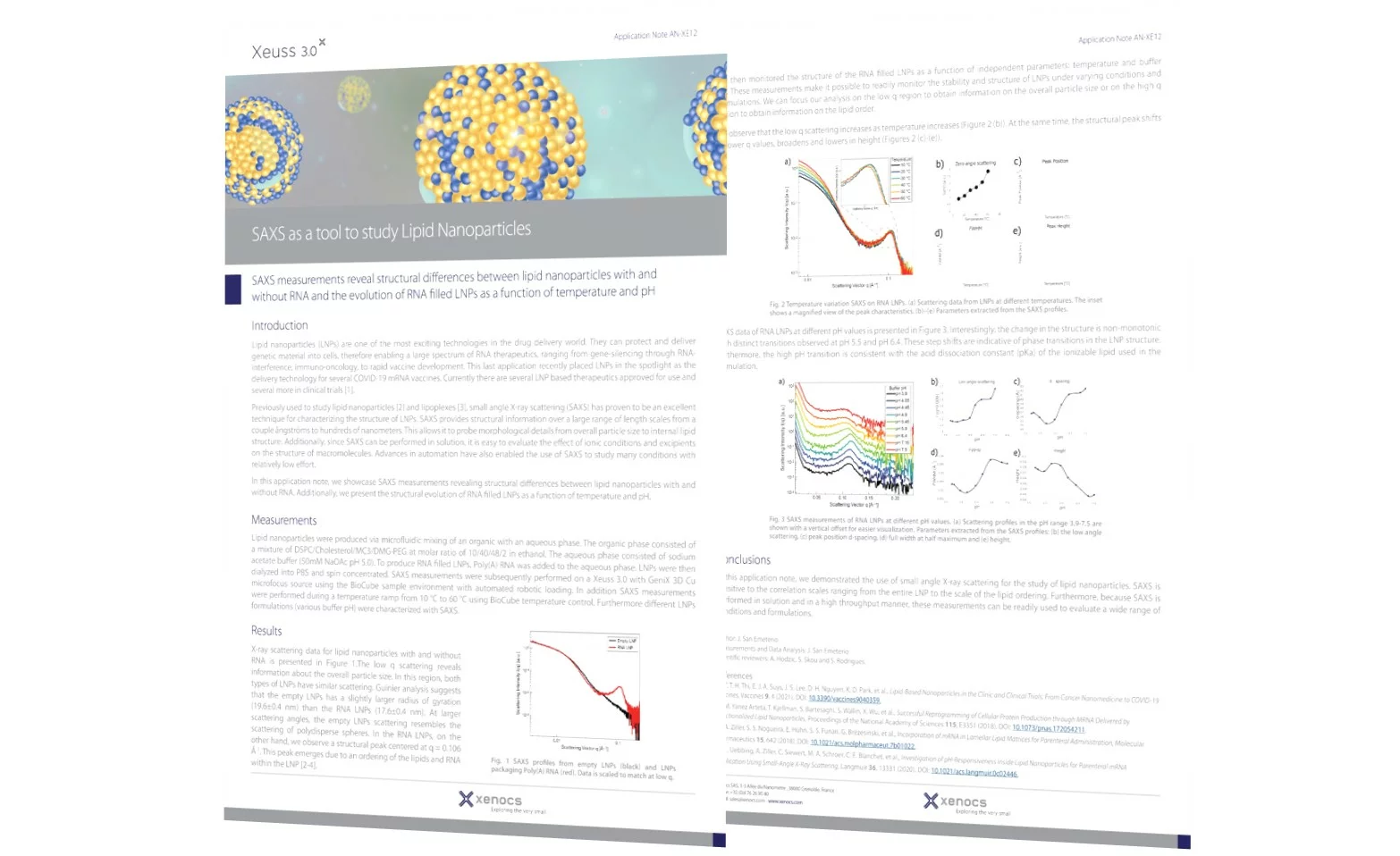SAXS measurements reveal structural differences between lipid nanoparticles with and without RNA and the evolution of RNA filled LNPs as a function of temperature and pH
Lipid nanoparticles (LNPs) are one of the most exciting technologies in the drug delivery world. They can protect and deliver genetic material into cells, therefore enabling a large spectrum of RNA therapeutics, ranging from gene-silencing through RNA-interference, immuno-oncology, to rapid vaccine development. This last application recently placed LNPs in the spotlight as the delivery technology for several COVID-19 mRNA vaccines. Currently there are several LNP based therapeutics approved for use and several more in clinical trials [1].
Previously used to study lipid nanoparticles [2] and lipoplexes [3], small angle X-ray scattering (SAXS) has proven to be an excellent technique for characterizing the structure of LNPs. SAXS provides structural information over a large range of length scales from a couple ångströms to hundreds of nanometers. This allows it to probe morphological details from overall particle size to internal lipid structure. Additionally, since SAXS can be performed in solution, it is easy to evaluate the effect of ionic conditions and excipients on the structure of macromolecules. Advances in automation have also enabled the use of SAXS to study many conditions with relatively low effort.
In this application note, we showcase SAXS measurements revealing structural differences between lipid nanoparticles with and without RNA. Additionally, we present the structural evolution of RNA filled LNPs as a function of temperature and pH.


































